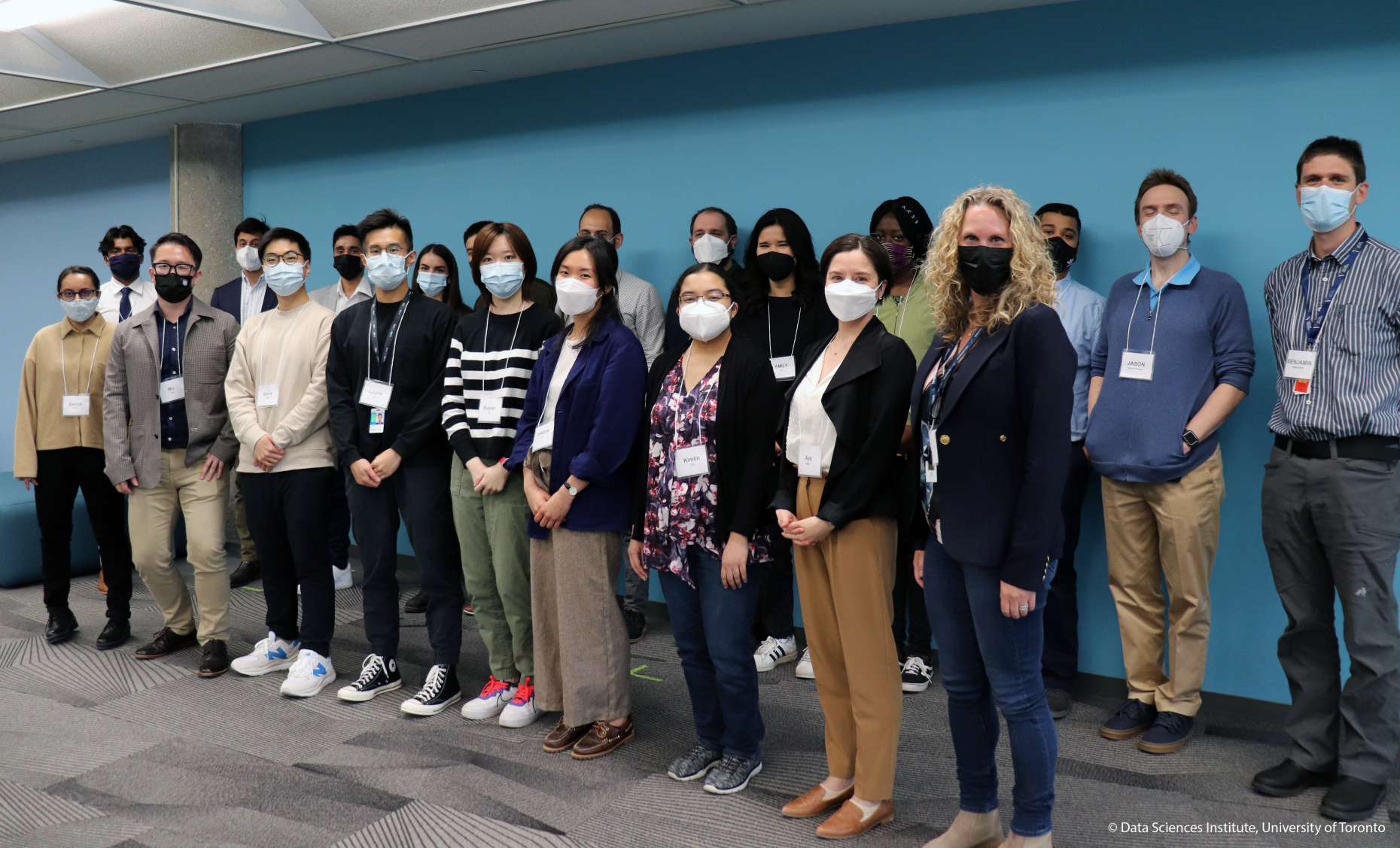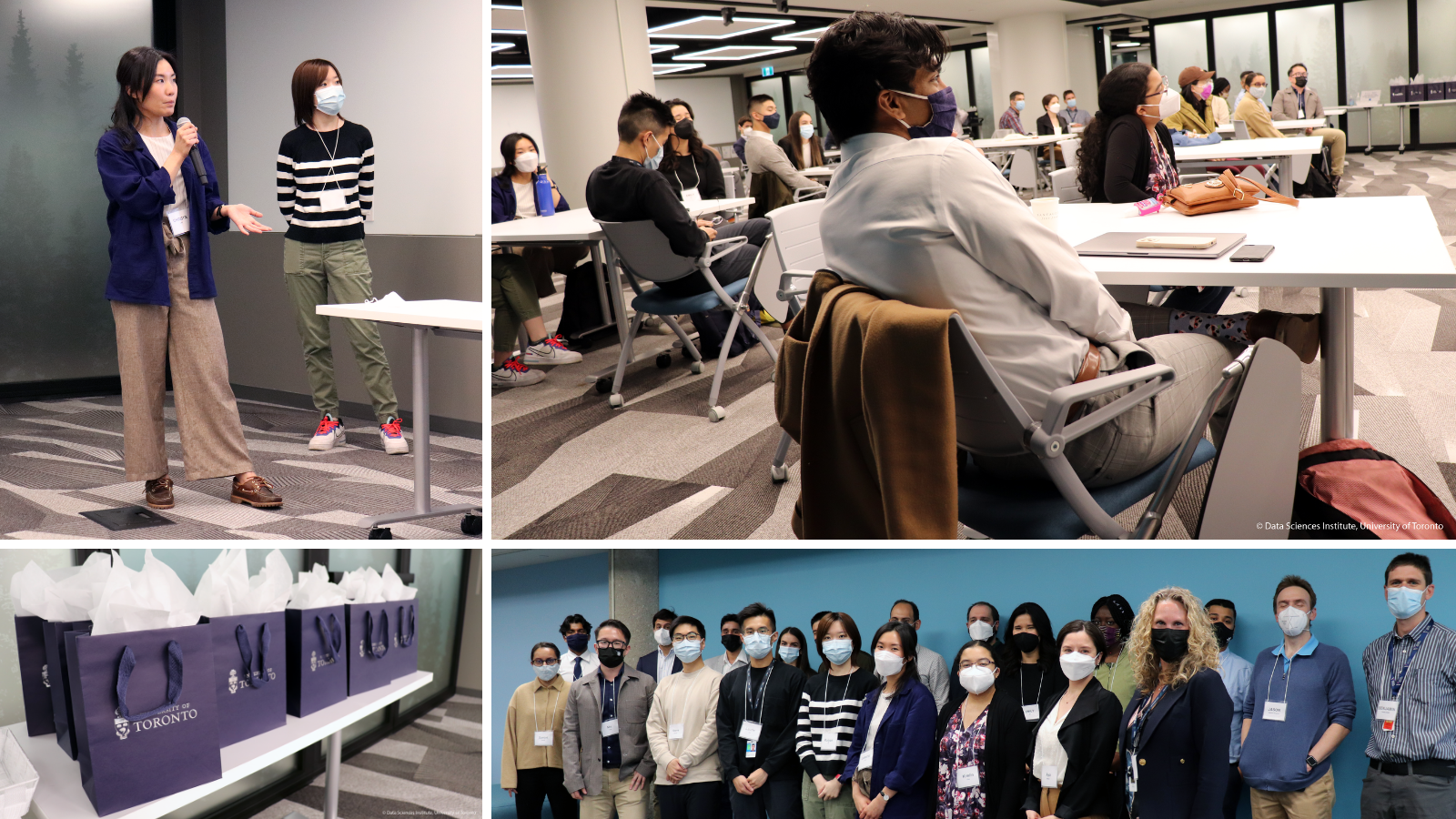Reproducibility is essential for research. How can we know if a study is reliable if it is not reproducible or replicable? A researcher should be able to pick up any piece of published research and replicate it, provided they have the right materials.
But just how hard is it to reproduce research?
Six student teams, from across U of T, including the Faculty of Applied Science and Engineering, the Temerty Faculty of Medicine, the Dalla Lana School of Public Health, and the Faculty of Arts and Science, set out to try and answer this question by attempting to reproduce published analytic research. Each team presented its discoveries during the recent Student-Led Reproducibility Challenge that aimed to raise awareness of reproducibility amongst students and emphasize that robust and reproducible processes are critical to maintaining confidence in research.
Reproducibility is a key Thematic Program for the Data Sciences Institute, and this challenge was pioneered by the Reproducibility co-leads Rohan Alexander, Faculty of Information and Statistical Sciences, Faculty of Arts & Science; Benjamin Haibe-Kains, University Health Network and Medical Biophysics at the Temerty Faculty of Medicine; and Jason Hattrick-Simpers, Faculty of Applied Science and Engineering.
“We were very excited to see the high level of engagement, and everyone was impressed with the level of work and commitment to the challenge. We hope this is the first of many student-led reproducibility challenges and hackathons. It is so important that future researchers value reproducibility and carry these lessons forward in their work,” says Hattrick-Simpers, team captain for one of the student teams.
“The student teams had such great presentations. The level of commitment to thoroughness and dedication to reproducing the computational methods was impressive. Transparency, reproducibility, and replication in research are more important than ever. We need to be better at communicating the solutions and challenges we face as researchers,” says Prof. Aya Mitani, team captain for one of the student teams and assistant professor at the Dalla Lana School of Public Health.
The challenge of reproducibility
The teams reported multiple cross-cutting challenges. For example, many teams had trouble accessing the necessary data publicly. This was the case for Alyssa Schleifer and Hudson Yuen, whose research paper was about safety, health, and isolation in prisons. They reported that the original datasets were unavailable in many cases, with only pre-processed subsets accessible, this affected their ability to check for robustness or derive new findings.
Kimlin Chin, who replicated a paper concerning falling US birth rates, said that finding the right paper was difficult. “Finding a paper that had sufficient content to make an interesting reproduction paper and also came with a complete reproduction package i.e., was not missing any code, data, or output files was a challenge.”
Sanjot Grewal, Steve Jeoung, Walid Maraqa, and Mu Yang attempted to reproduce the results of a paper studying the effect of social distancing on COVID-19 cases in the US during the early days of the pandemic. The team discovered inconsistencies in the reproduced results and realized that the authors of the original paper had incorrectly documented a critical formatting and pre-processing step. Christie Lau, Laurie Lu, Ruiyan Ni and Emily So, worked on a paper concerning predictive models of drug response, and found that the lack of proper data resources and identification set off the reproducibility process on the wrong foot.
Having the right technology was also a challenge. Daniel Persaud, who used a paper looking at a general-purpose machine learning framework for predicting properties of inorganic materials, experienced computational constraints since he had to rely on using his personal computer.
“It was remarkably interesting to hear from students working in different research fields. Most of the obstacles they faced were quite universal, but some were specific to their field where programming languages and ways to access data differ. We have a lot to learn from each other and more importantly, we need to work together to improve transparency and reproducibility,” says Haibe-Kains, team captain for one of the student teams.

The importance of reproducibility in the workplace
Holly Xie, Senior Applied Scientist – Machine Learning Products at Xero Accounting, and Chris Henry, Senior Economist at the Bank of Canada spoke about the importance of reproducibility for organizations. Henry discussed the importance of reproducibility at the Bank of Canada, highlighting the necessity of creating reproducible content and maintaining records for when new employees are onboarded.
“Reproducibility is important because things change over time. You need to know how things were done. People also come and go. Reproducibility is essential in helping new team members come up to speed,” he said during his presentation.
The student teams consisted of:
- Alyssa Schleifer and Hudson Yuen, Challenge: Western, B. (2021). Inside the Box: Safety, Health, and Isolation in Prison
- Kimlin Chin, Challenge: Kearney, M. S., Levine, P. B., & Pardue, L. (2022). The Puzzle of Falling US Birth Rates since the Great Recession
- Swarnadeep Chattopadhyay, Arsh Lakhanpal, and Olaedo Okpareke, Challenge: Kearney, M. S., Levine, P. B., & Pardue, L. (2022). The Puzzle of Falling US Birth Rates since the Great Recession
- Christie Lau, Laurie Lu, Ruiyan Ni and Emily So, Challenge: Ma, J., Fong, S. H., Luo, Y., Bakkenist, C. J., Shen, J. P., Mourragui, S., & Ideker, T. (2021). Few-shot learning creates predictive models of drug response that translate from high-throughput screens to individual patients
- Sanjot Grewal, Steve Jeoung, Walid Maraqa, and Mu Yang, Challenge: Siedner, M. J., Harling, G., Reynolds, Z., Gilbert, R. F., Haneuse, S., Venkataramani, A. S., & Tsai, A. C. (2020). Social distancing to slow the US COVID-19 epidemic: Longitudinal pretest-posttest comparison group study
- Daniel Persaud, Challenge: Ward, L., Agrawal, A., Choudhary, A., & Wolverton, C. (2016). A general-purpose machine learning framework for predicting properties of inorganic materials

